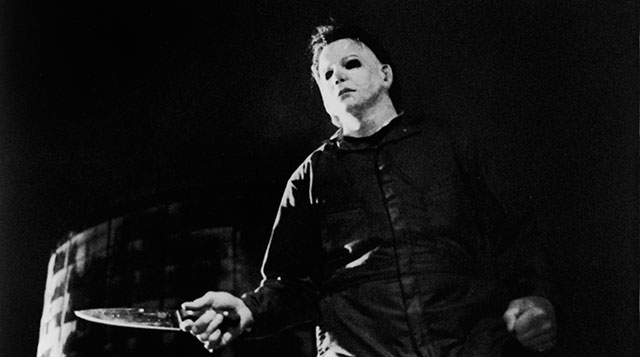
Halloween Kills is out now in Cineworld cinemas, so its time to bolt your doors, lock the windows and curl up with our essential blog list of slasher horror movie icons.
The idea of the relentless killer, often masked or concealed for dramatic effect, has long been a favourite of horror cinema. But where did this notion begin? And which movies have deployed the idea to the most successful effect? Scroll down to find out.
1. Psycho (1960)
The slasher movie started here with Alfred Hitchcock's groundbreaking black and white shocker. Seeking an experimental alternative to his more grandiose North by Northwest, Hitchcock alighted on the novel Psycho by Robert Bloch. Fascinated by its sordid undercurrents of necrophilia, incest and psychological madness (inspired by real-life grave-robber Ed Gein), Hitchcock saw an opportunity to push the horror boundaries.
He populated his crew with his Alfred Hitchcock Presents television team, made the bold decision to kill off star Janet Leigh midway through during the notorious shower scene, and unleashed a shocking chiller the likes of which the world had never seen. Hitchcock's marketing savvy, insisting that latecomers wouldn't be admitted into the cinema, while reiterating the need to preserve the surprise, generated a box office frenzy, and one of the most influential movies of all time. Among its many extraordinary elements: Anthony Perkins' performance as Norman Bates, shifting from doe-eyed loner to psychotic murderer on a dime, and Bernard Herrmann's driving score, which practically birthed the modern thriller soundtrack.
2. Peeping Tom (1960)
Released in the same year as Psycho, Michael Powell's equally innovative Peeping Tom met a sad fate. Possibly even more audacious than Hitchcock's movie, Peeping Tom pushes the notion of voyeurism to the limit. It implicates the audience in the murders undertaken by a withdrawn photographer, who films his victims as they meet their fate. This subjective camerawork plays out in front of us in all its lurid glory, making us question our culpability in the desire for horrific entertainment.
With its unashamedly discomforting approach and sordid depiction of early 1960s London, Peeping Tom was widely reviled on its release. To that extent, the esteemed Powell, who with Emeric Pressburger had been responsible for A Matter of Life and Death and others, had to relocate to Australia where his career withered. However, the film has subsequently been reappraised by the likes of Martin Scorsese, who has collaborated with Powell's editor wife Thelma Schoonmaker on several classics of his own. Now, Peeping Tom is recognised as a pioneering and brilliant thriller.
3. The Texas Chainsaw Massacre (1974)
Still, if we're talking about slasher movies that caused a frisson, then they don't come more controversial than The Texas Chainsaw Massacre. Tobe Hooper's enormously influential horror disturbs because of its aesthetic realism: the movie has a quasi-documentary, grainy approach, lending chilling authenticity to its story of madness in the backwaters of North America. With its grinding soundtrack and unforgettable central horror icon in the form of Leatherface, the movie is an assault on the senses.
Yet, ironically enough, it contains very little blood. The movie instead gets the audience to imagine the carnage that ensues when a group of teens stumble across Leatherface and his family. Impressionistic editing and an overwhelming sound design create an atmosphere of terror, suggesting violence when in fact there's little present. When the BBFC subsequently tried to cut the movie in the 1970s, they could find relatively little gore to justify their choice of edits. They therefore decided to ban it outright until 1999. However, the message had already got out there back in 1974: Texas Chainsaw was an enormous box office hit that got everyone talking, breaking down the boundaries of taste within horror cinema.
4. Halloween (1978)
Slasher movie emblem Michael Myers has been stabbed, burned and decapitated throughout the course of the Halloween series. He was recently resurrected in the terrific Blumhouse movie reboot, with sequel Halloween Kills on release now. But there's always an inception point for most successful horror franchises, and in the case of Halloween, it began with director John Carpenter. His eerily prowling camerawork drew on the voyeurism of Alfred Hitchcock's Psycho, paying debt to the classics while also reinforcing many slasher archetypes familiar in the genre today (for example, the virginal 'final girl' who must confront the killer after a legacy of carnage).
This story of terror takes place in unassuming Haddonfield, Illinois, with Carpenter's assured camerawork exploiting every shadow and crevice for maximum suspense. With his white, inverted William Shatner mask (seriously), the looming Michael Myers, credited as 'The Shape', is less a human killer and more an embodiment of relentless evil, possibly supernatural in nature. That immediately recognisable musical score, along with Jamie Lee Curtis' breakout turn as the brave Laurie Strode, is the icing on the cake. Halloween became one of the most profitable independent movies of all time, defying its low budget to make horror history purely thanks to imaginative, terrifying storytelling.
5. Friday the 13th (1980)
Kind of a lesser twist on Halloween, the Friday the 13th franchise nevertheless boasts its own slasher antihero. Enter Jason Vorhees, hockey-masked slayer of horny teenagers who has powered his way through multiple sequels and remakes. Ironically enough, he barely features in the first and best movie, although the murderous legacy of the Vorhees family looms large over the storyline.
When a group of largely idiotic, sexed-up teenagers (including a young Kevin Bacon) arrive at the apparently idyllic Camp Crystal Lake, their transgressions bring down the actions of a deranged killer. As made clear in the opening act of Wes Craven's Scream, the psycho on this occasion is not Jason, but his mother. However, he does make an appearance during that infamous jump scare in the final act, establishing him as the focal point going forward.
6. A Nightmare on Elm Street (1984)
Writer-director Wes Craven was one of the most influential horror filmmakers of all time. He started out with the notoriously nasty Last House on the Left, eventually graduating into more ambitious and considered fare like The Hills Have Eyes and the Scream movies. In-between those was A Nightmare on Elm Street, quite possibly his most imaginative and brilliant concept. Like all great horror, it taps into a profoundly universal fear: what happens if you can die in your sleep?
The movie is not just a chiller but also a twisted Freudian fairy tale in which the anxieties and fears of the central teen ensemble are exploited for maximum visual effect. Like the earlier Friday the 13th, the film's main antagonist is largely kept out of sight, but when he does appear, he's not easily forgotten. Enter Robert Englund's cackling, scarred and razor-fingered Freddy Krueger, a deranged killer who lurks in the subconscious and can bend time and physics to his will. The Nightmare sequels reframed Freddy as something of a witty antihero, but there's no such comfort from his malevolent presence in this superior horror.
7. Scream (1996)
The slasher movie was in a bad way in the mid-1990s, diluted by umpteen cheesy sequels that failed in their singular aim to scare. Step forward Wes Craven who, as with the earlier A Nightmare on Elm Street, galvanised the entire genre in one fell swoop. Working with screenwriter Kevin Williamson, Craven hit on a brilliant notion: what if a slasher movie was populated by characters who were keenly aware of horror conventions?
The end result was Scream, a critical and commercial smash-hit that propelled its own franchise. (Scream 5 is on the way next year.) With its smart-alec ensemble of hip young 1990s actors, all working wonders with Williamson's witty screenplay, Scream had energy, style and humour to spare. That the film is itself genuinely scary doesn't hurt – that infamous opening sequence with Drew Barrymore left audiences trembling and anticipating yet more terror to come. The movie kick-started a new craze for slasher cinema (see the next film on this list), and also helped popularise a wave of 1990s teen-focused content, including Dawson's Creek and Buffy the Vampire Slayer.
Don't forget to book your tickets for the 25th anniversary of Scream, currently playing in Cineworld cinemas.
8. I Know What You Did Last Summer (1997)
Writer Kevin Williamson returned to the slasher fold with this lesser offering. Adapted from the novel of the same name, it's a more straightforward campfire tale of teens on the wrong side of a murderous maniac. Following a hit and run, a group of friends in a Carolina coastal town make the mistake of dumping the body in the sea. A year later, a mysterious figure in a rain slicker, wielding a hook, claims to know exactly what they did. The race is on to stop the psycho before the bodies begin to pile up.
It lacks the irony and razor-sharp comic timing of Scream, but there's enough to recommend this as a solidly creepy slasher movie. The dark recesses of its coastal setting give rise to some effectively tense chase scenes, including one with Sarah Michelle Gellar that's genuinely breathless and well-staged. A sequel followed named I Still Know What You Did Last Summer, which is surely a mistake. I Know What You Did The Summer Before Last would be more accurate, right? Still, it doesn't exactly trip off the tongue.
9. Hush (2016)
Mike Flanagan has generated attention for his ambitious TV restaging of classic ghost stories. His shows The Haunting of Hill House and The Haunting of Bly Manor have drawn acclaim for their creepy yet emotive blend of supernatural scares and character-led drama. But Flanagan's movies are, if anything, even better, from haunted mirror movie Oculus to inventive slasher thriller Hush.
The latter movie does a good job of taking a central gimmick, a deaf woman besieged in her house by a masked madman, and twisting it just enough that we remain riveted throughout. The central idea allows for the notion of subjective sound, putting us inside the main character's viewpoint and therefore denying us information as to the sound of somebody lurking nearby. That cranks up the suspense to near-unbearable levels, and the valve is occasionally released by explosions of nasty gore.
10. Happy Death Day (2017)
If Wes Craven effectively fused horror and humor in Scream, then Happy Death Day takes the idea to the extreme. Groundhog Day meets Friday the 13th in this amusing and engaging Blumhouse offering, in which a vapid sorority girl is forced to relive her murder over and over again. Could it mean that she needs to become a better person? Of course it does – it's just a shame that these lessons come at such a painful price, with the mysterious killer lurking in every corner.
As the imperilled central character, Jessica Rothe is a hoot, by turns self-absorbed and resourceful, forever inching her way forward through the time loop and closing in on the murderer's identity. So successful was director Christopher Landon's concept ($125 million grosses against a mere $4.8 million budget) that a sequel, Happy Death Day 2 U, was immediately greenlit. Rumour has it that Happy Death Day To Us is on its way...
What is your favourite slasher movie of all time? Let us know @Cineworld. And happy Halloween!
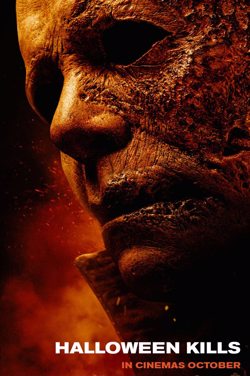
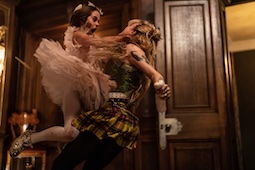
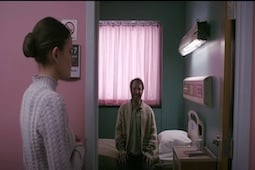
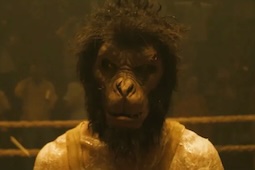
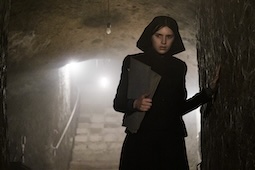
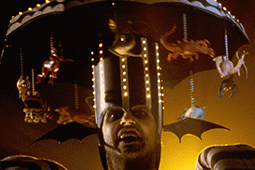


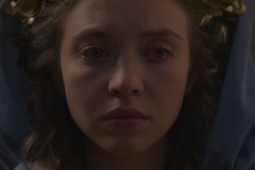

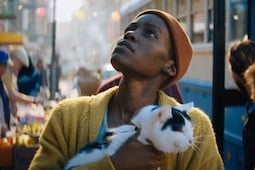
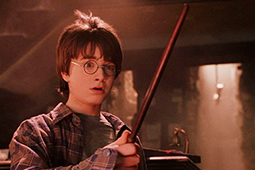
.jpg)
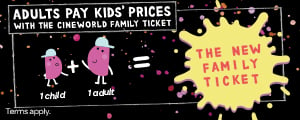

.jpg)
.png)






